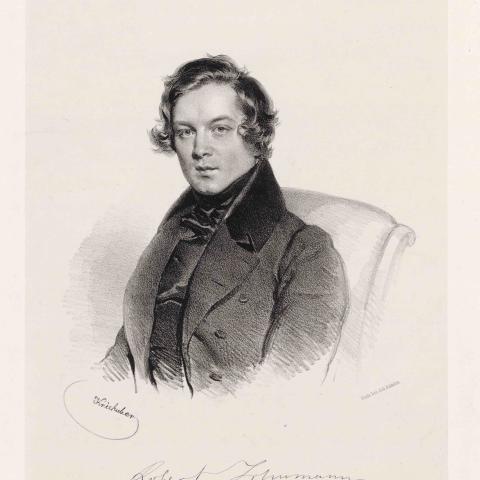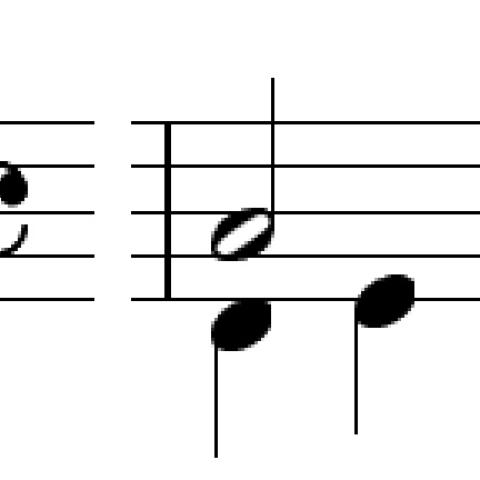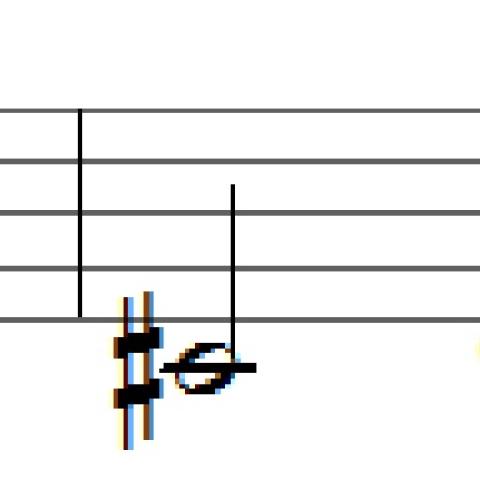Gavin Black, director of the Princeton Early Keyboard Center, Princeton, New Jersey, is preparing performances on Bach’s The Art of the Fugue on both harpsichord and organ for the next two concert seasons.

The Art of the Fugue, part III
This month’s installment picks up exactly where last month’s left off.
Notes on the Individual Movements
Contrapunctus 1 is a four-voice fugue on the original and simplest form of The Art of the Fugue theme (Example 1). There is no regular countersubject. The mood is forthright and powerful, but with underlying calm.
Contrapunctus 2 is a four-voice fugue on the same theme, except that the last notes are changed from eighth notes to dotted eighths and sixteenths (Example 2). This dotted rhythm pervades the piece. The sounds jump rather than flow from one beat to the next. The effect is, at least intermittently, unsettling. The dotted rhythms convey a suggestion of French musical style, though the piece is not fully worked out in that style.
Contrapunctus 3 is a four-voice fugue on the inversion of the original theme (Example 3). The piece moves slowly and gently, and the mood is quiet. The subject is accompanied (after the first entrance) by a chromatic countersubject loosely derived from the subject itself (Example 4). This countersubject also provides a short motive (Example 5) on which two episodes are based. This motive will return later in the work. In measure 23 the subject enters in a new form: with passing tones (Example 6). Although it is abandoned in the next movement this will become the most important form of the theme later on.
Contrapunctus 4 is also a four-voice fugue based on the inversion of the main theme (see Example 3). The theme is accompanied by a short chromatic motive, more explicitly dissonant than that of Contrapunctus 3 (Example 7). The movement is also characterized, however, by long episodes of almost exaggerated consonance. These are based mainly on a simple two-note descending third (which can be heard as a reference to the thirds in the original, non-inverted theme, although that theme is not explicitly present in this movement) and a four-note stepwise fourth, both ascending and descending, which is derived from the last four notes of the main theme, in both its inverted and non-inverted forms. There are several lushly beautiful internal cadences, almost hypnotic in their effect. The last measures conceal a single reference to the B-A-C-H motive.
Contrapunctus 5 opens with a statement of the inverted theme with passing tones, introduced in Contrapunctus 3. Before the end of the theme, this is joined by the non-inverted theme with passing tones in the bass (Example 8). This overlapping of themes, called “stretto” by theorists of fugue writing, is by no means characteristic of the opening of a fugue. Nor is it characteristic for the second subject entry to be an inversion rather than a transposition of the first. This is a gesture of union of the two essential forms of the main theme. They are the opposite of each other, but they can be joined together. In measure 53, an even closer union is suggested with a four-voice stretto at the interval of one quarter note. The inverted and non-inverted themes, however, are treated to this process separately (measured 53–57 and 65–69)! The mood of Contrapunctus 5 is alternately urgent and dreamy, or perhaps both at once. In the last measures of the movement the two versions of the theme are heard simultaneously, somewhat concealed by an unexpected six-voice texture.
Contrapunctus 6 is marked in Stile Francese. Thus it realizes the suggestion made by Contrapunctus 2. It is not easy to define what the “French style” is. For the purposes of this piece, however, it is enough to recognize that it involves the use of dotted rhythms, very fast short runs, and moderately fast longer runs. It also aims to create a feeling of power and grandeur in the context of rather static (non-flowing) rhythm. Native French pieces in this style would never have been fugues, so Bach was doing something new. This piece, like the last, opens with a stretto, at the interval of only one measure. The impatient quality of the second voice, created by its insistence on coming in early, is here intensified by the fact that is comes in “too fast,” that is, in diminution. The very rapid four-note runs, heard from measure 7 on, are a standard characteristic of the French style, but they can also be seen as a double diminution of the last four notes of the main theme.
Contrapunctus 7 is a fugue on the main theme with passing tones, sometimes inverted and sometimes in diminution. To this is added the theme in augmentation (Example 9) that is heard first in the bass and once in each voice. Almost every note in this contrapunctus is derived directly from the theme, by augmentation, diminution, or double diminution. The effect is one of extreme concentration and intensity, but also of rather jovial power and good humor.
Contrapunctus 8 opens with a short fugue exposition on a brand new theme, not derived in any way from what has come before (Example 10, but see under Contrapunctus 18, below). After several short episodes and a cadence in the tonic, a second exposition begins, based on the same theme and another brand new theme (Example 11), simultaneously. These two themes work themselves out with increasing intensity and exuberance, until they are joined in a somewhat hidden manner, that is, in an inner voice, by a new version of the main theme (Example 12). The intensity and exuberance, the latter quality created mainly by the almost exaggerated repetitions of the second theme (Example 11), continue to the end.
Contrapunctus 9 is a fugue on a new subject (Example 13) that is loosely derived from the main theme. Whereas Contrapunctus 8 opened with a descending whole-step (see Example 10), this movement opens with an upward leap of an octave. This is a contrast to Contrapuncti 1–7, all of which opened with the interval D–A or A–D. Contrapunctus 9 is a lively, flowing piece in which exuberance, though present, is restrained. The main theme enters in augmentation in the soprano voice in measure 35 and is heard several times thereafter.
Contrapunctus 10 opens with a fugue exposition on a subject (Example 14) whose rhythmic and melodic peculiarities create more of a sense of expectation than of fulfillment. The expectation is met with the entry of the main theme in the soprano voice in measure 23. What follows is a fugue on this subject, in which Example 14 serves as a countersubject. So many new motives are introduced, developed briefly, and then abandoned, that the movement becomes a celebration of fecundity (or perhaps of profligacy!). The countersubject (Example 15) that appears in measures 22–26, and does not appear again in this movement, will supply the subject of the second section of Contrapunctus 18 (see below).
Contrapunctus 11 is the centerpiece of The Art of the Fugue. It is probably the most complex contrapuntal creation of J. S. Bach, as well as one of the most deeply and powerfully expressive. It is a contrapuntal fantasy making significant use of at least ten different themes and including five fully worked out fugue expositions. It is related to what has come before and what will come after in more ways than it is possible to describe. All of the thematic material is taken from earlier contrapuncti, mostly from Contrapunctus 8, but also at least from 3 and 10. The richness of thematic material is reminiscent of 10, while the compactness with which it is used is reminiscent of 7. The sectional construction is reminiscent of 5 and 8. The compellingly powerful cadences suggest number 4. The most powerful of these cadences is followed by the introduction of the B-A-C-H motive, which looks forward to Contrapunctus 18 and also back to number 8 (see above under B-A-C-H). At measure 158, the main theme and its inversion are again, as in Contrapunctus 5, united in absolute simultaneity, this time without the concealment that marked this event in the earlier movement.
Contrapunctus 11 opens with a fugue exposition on the main theme, with passing tones and altered rhythmically as in Contrapunctus 8. The opening rhythm is the same as that of Contrapunctus 10. Following a cadence in measure 27 there is a loosely constructed fugal exposition on the two new themes: the inversion of the first theme of Contrapunctus 8 and a chromatic theme filling out the interval of a fifth. These themes are joined by a motive taken from Contrapunctus 3. This section ends with a cadence in measures 70–71. The next section is a short fugal exposition on the inversion of the opening theme, in which the motive borrowed from Contrapunctus 3 is also used. In measure 89 there begins a long, rather freely constructed fugue based primarily on the new eighth-note theme that incorporates the B-A-C-H motive. All of the thematic material that has been introduced so far in this movement participates in this section, which lasts until measure 158. At this point The Art of the Fugue theme and its inversion enter simultaneously in the soprano and alto, and then in the tenor and bass. The remaining thirty bars are concerned with a limitlessly joyous uniting of themes in all possible combinations. The main theme appears for the last time (in this movement) in the soprano in measure 180. The last note of this theme is also the last note of Contrapunctus 11 (see Example 16 a–j for all the thematic material of Contrapunctus 11).
At this point, power, grandeur, complexity, repetition, development, and intensity have gone as far as they can. The next four movements are relatively short, quiet, and simple, though not any less expressive. They are strict canons in two voices. Contrapunctus 12 is a canon at the octave based on an ornamented version of the main theme in triplet sixteenth notes (Example 17). It is a good-humored, even humorous, piece. Contrapunctus 13 is somewhat darker in mood. It is a canon at the twelfth, based on a close variant of the main theme (Example 18). Its rhythmic interest comes from an alternation between triplets and duple rhythms. Contrapunctus 14 is a canon at the tenth, based on a completely straightforward version of the inverted main theme. This is accompanied by a quiet, rather wistful triplet figure (Example 19). Contrapunctus 15 is a canon by augmentation in contrary motion. That is, the second voice enters with an inversion of the first voice, at half speed. The second voice falls progressively farther behind, and by the end it has presented less than half the musical material of the first voice. As if to be fair, Bach has arranged the work in two sections, with the upper and lower parts changing roles halfway. This canon is based on a chromatically altered version of the main theme (Example 20, p. 24). The effect is rather weird, both disquieting and humorous.
Contrapunctus 15 reintroduces a principle of inversion that was so important through number 11. Contrapuncti 16 and 17 carry this principle farther than before. Each is in two sections, and, in each case, the second section is a note-by-note inversion of the first. These are contrapuntal tours-de-force of the highest order, all the more so since in both cases the inversions sound just as natural, spontaneous, and free as the original forms. Contrapunctus 16 is in three voices, and based on a triplet version of the main theme, reminiscent in different ways both of Contrapunctus 9 and of Contrapunctus 12 (Example 21, p. 24). The style is that of a moderately lively trio sonata movement. Contrapunctus 17 is a four-voice fugue based on a version of the main theme that is identical to the original version (Example 1), except that it is in triple time (Example 22, p. 24). The texture is very thick. With many voice crossings, the contrapuntal nature of the work is somewhat obscured. The mood is dreamy and brooding. In measure 21 a new version of the subject enters (Example 23, p. 24), which is derived from a short countersubject figure (Example 24, p. 24), which was, in turn, derived from the last four notes of the subject itself. Each half of the work ends with a flourish in sixteenth notes.
Contrapunctus 18, the last movement of The Art of the Fugue, is a monumental work, surpassing even Contrapunctus 11 in scale, and equaling it in expressive power. It was left incomplete. Bach died either before he wrote the ending down or before he was even able to conceive of an appropriate ending to a work of this stature. In its present form, the movement has 239 measures. Any formally adequate continuation and ending would bring the length of the work to over four hundred measures, making it very likely the longest fugue from the Baroque era. This, however, was not to be.
The movement opens with a fugue in four voices on an apparently new theme (Example 25). The first four notes of this theme, however, are identical to the first four notes of the main theme (with passing tones). After the fourth note the theme doubles back on itself, in an allusion to the mirroring process whereby the previous two movements were created. Thus this theme is a version of the first half of The Art of the Fugue theme. This new theme can also be derived directly from the second half of the first subject of Contrapunctus 8 (see Example 10). Furthermore, the very first two notes of Contrapunctus 18 are an exact echo of the last two notes of Contrapunctus 17; and the whole of Example 25 is essentially the same as the flourish that ended the first half of that movement. The fugue built on this subject—one of extraordinary grandeur—lasts 115 measures. It overlaps with a new fugue on a new subject (Example 26). This subject is derived closely from a theme that was introduced briefly in Contrapunctus 10 (see above and Example 15). It also includes, on strong beats, all of the notes of the main theme that are missing from the first theme of Contrapunctus 18: it completes that theme. This fugue is livelier in character than the first fugue. The first theme does enter, however, five times as a kind of cantus firmus. The last two such entries are in stretto with each other. This fugue ends in measure 193. A third fugue now begins, on the B-A-C-H theme in the simplest, most straightforward possible form (Example 27). This section brings a return to the majestic quality of the first section, but it is much shorter. In measure 233 it gives way to a return of the second subject in (partial) stretto with itself. This is joined one measure later by the first theme in the bass, and, one measure later still, by the B-A-C-H theme in the tenor. The three themes are united; the main Art of the Fugue theme is present only by implication or by transfiguration. At this moment the work ends. There is no cadence, no resting place. It ends as abruptly as could be. We are challenged to accept that the meaning, quality, and completeness of a work of art, as of a human life, do not come from the timing or nature of its end, but from what it is and what it does.






